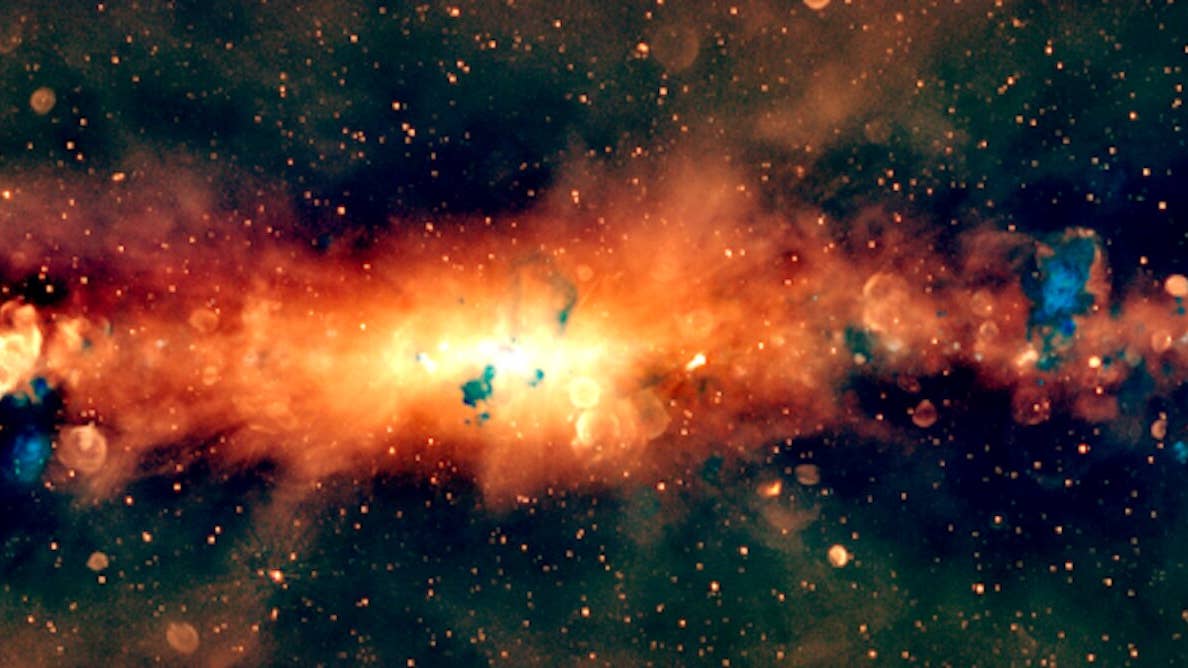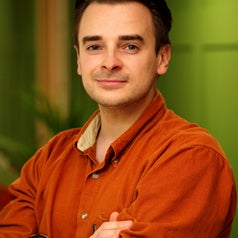Mystery Objects From Other Stars Are Visiting Our Solar System. These Missions Will Study Them Up Close
Intercepting interstellar objects could transform fleeting encounters into profound scientific opportunities.

Image Credit
Artist's concept of 'Oumuamua / NASA
Share
In late 2017, a mysterious object tore through our solar system at breakneck speed. Astronomers scrambled to observe the fast moving body using the world’s most powerful telescopes. It was found to be one quarter mile (400 meters) long and very elongated—perhaps 10 times as long as it was wide. Researchers named it ‘Oumuamua, Hawaiian for “scout.”
'Oumuamua was later confirmed to be the first object from another star known to have visited our solar system. While these interstellar objects (ISOs) originate around a star, they end up as cosmic nomads, wandering through space. They are essentially planetary shrapnel, having been blasted out of their parent star systems by catastrophic events, such as giant collisions between planetary objects.
Astronomers say that 'Oumuamua could have been traveling through the Milky Way for hundreds of millions of years before its encounter with our solar system. Just two years after this unexpected visit, a second ISO—the Borisov Comet—was spotted, this time by an amateur astronomer in Crimea. These celestial interlopers have given us tantalizing glimpses of material from far beyond our solar system.
But what if we could do more than just watch them fly by?
Studying ISOs up close would offer scientists the rare opportunity to learn more about far off star systems, which are too distant to send missions to.
There may be over 10 septillion (or ten with 24 zeros) ISOs in the Milky Way alone. But if there are so many of them, why have we only seen two? Put simply, we cannot accurately predict when they will arrive. Large ISOs like 'Oumuamua, that are more easily detected, do not seem to visit the solar system that often, and they travel incredibly fast.
Ground- and space-based telescopes struggle to respond quickly to incoming ISOs, meaning that we are mostly looking at them after they pass through our cosmic neighborhood. However, innovative space missions could get us closer to objects like 'Oumuamua, by using breakthroughs in artificial intelligence (AI) to guide spacecraft safely to future visitors. Getting closer means we can get a better understanding of their composition, geology, and activity—gaining insights into the conditions around other stars.
Emerging technologies being used to approach space debris could help to approach other unpredictable objects, transforming these fleeting encounters into profound scientific opportunities. So how do we get close? Speeding past Earth at an average of 32 kilometers per second, ISOs give us less than a year for our spacecraft to try and intercept them after detection. Catching up is not impossible—for example, it could be done via gravitational slingshot maneuvers. However, it is difficult, costly and would take years to execute.
The good news is that the first wave of ISO-hunting missions is already in motion: NASA’s mission concept is called Bridge and the European Space Agency (ESA) has a mission called Comet Interceptor. Once an incoming ISO is identified, Bridge would depart Earth to intercept it. However, launching from Earth currently requires a 30-day launch window after detection, which would cost valuable time.

The Comet Interceptor mission is scheduled to launch in 2029. ESA / Work performed by ATG under contract to ESA, CC BY-SA
Comet Interceptor is scheduled for launch in 2029 and comprises a larger spacecraft and two smaller robotic probes. Once launched, it will lie in wait a million miles from Earth, poised to ambush a long period comet (slower comets that come from further away)—or potentially an ISO. Placing spacecraft in a “storage orbit” allows for rapid deployment when a suitable ISO is detected.
Another proposal from the Institute for Interstellar Studies, Project Lyra, assessed the feasibility of chasing down 'Oumuamua, which has already sped far beyond Neptune’s orbit. They found that it would be possible in theory to catch up with the object, but this would also be very technically challenging.
The Fast and the Curious
These missions are a start, but as described, their biggest limitation is speed. To chase down ISOs like 'Oumuamua, we’ll need to move a lot faster—and think smarter.
Future missions may rely on cutting-edge AI and related fields such as deep learning—which seeks to emulate the decision-making power of the human brain—to identify and respond to incoming objects in real time. Researchers are already testing small spacecraft that operate in coordinated “swarms,” allowing them to image targets from multiple angles and adapt mid-flight.
At the Vera C Rubin Observatory in Chile, a 10-year survey of the night sky is due to begin soon. This astronomical survey is expected to find dozens of ISOs each year. Simulations suggest we may be on the cusp of a detection boom.
Any spacecraft would need to reach high speeds once an object is spotted and ensure that its energy source doesn’t degrade, potentially after years waiting in “storage orbit.” A number of missions have already utilized a form of propulsion called a solar sail.
Be Part of the Future
Sign up to receive top stories about groundbreaking technologies and visionary thinkers from SingularityHub.


These use sunlight on the lightweight, reflective sail to push the spacecraft through space. This would dispense with the need for heavy fuel tanks. The next generation of solar sail spacecraft could use lasers on the sails to reach even higher speeds, which would offer a nimble and low-cost solution compared to other futuristic fuels, such as nuclear propulsion.

The Vera Rubin Observatory in Chile should discover more interstellar objects. RubinObs/NOIRLab/SLAC/NSF/DOE/AURA/Y. AlSayyad
A spacecraft approaching an ISO will also need to withstand high temperatures and possibly erosion from dust being ejected from the object as it moves. While traditional shielding materials can protect spacecraft, they add weight and may slow them down.
To address this, researchers are exploring novel technologies for lightweight, more durable and resistant materials, such as advanced carbon fibers. Some could even be 3D printed. They are also looking at innovative uses of traditional materials such as cork and ceramics.
A suite of different approaches is needed that involve ground-based telescopes and space-based missions, working together to anticipate, chase down, and observe ISOs.
New technology could allow the spacecraft itself to identify and predict the trajectories of incoming objects. However, potential cuts to space science in the US, including to observatories like the James Webb Space Telescope, threaten such progress.
Emerging technologies must be embraced to make an approach and rendezvous with an ISO a real possibility. Otherwise, we will be left scrabbling, taking pictures from afar as yet another cosmic wanderer speeds away.
Disclosure statement:
Billy Bryan works on projects at RAND Europe that are funded by the UK Space Agency and DG DEFIS. He is affiliated with RAND Europe's Space Hub and is lead of the civil space theme, the University of Sussex Students' Union as a Trustee, and Rocket Science Ltd. as an advisor.
Chris Carter works on projects at RAND Europe that are funded by the UK Space Agency and DG DEFIS. He is affiliated with RAND Europe’s Space Hub and is a researcher in the civil space theme.
Theodora (Teddy) Ogden is a Senior Analyst at RAND Europe, where she works on defense and security issues in space. She was previously a fellow at Arizona State University, and before that was briefly at NATO.
This article is republished from The Conversation under a Creative Commons license. Read the original article.
Billy Bryan is the evaluation and research leader in the Science and Emerging Technology team at RAND Europe. He has seven years of experience in studies and evaluations with specific focuses on space technology and innovation policy, green innovation, research and innovation, and international development. He is an experienced project leader having led and worked on over 75 studies for UKRI (across councils), UKSA, DSIT, DESNZ, FCDO, UK national academies, Wellcome, and the European Commission. He has led large evaluations of public investments including of the UK's investments into the European Space Agency (ESA), the Nuclear Innovation Program (DESNZ), and UKSA’s Centre for Earth Observation Instrumentation (CEOI) programs. Bryan has particular expertise in applying theory-based evaluation in complex multi-phase evaluations, which includes contribution analysis, process tracing and delivering evaluation training. He completed his PhD in medical education at Sheffield Medical School. He is a Trustee at Sussex Students’ Union, an advisory board member of Rocket Science ltd. and sits on the UK Evaluation and Trial Advice Panel (ETAP).
Chris Carter is an analyst at RAND Europe. Working within the Science and Emerging Technology team, his focus is space policy. He specializes in quantitative data analysis and data visualization, and in UK and US space policy. Carter is currently leading a monitoring and evaluation study of the UK Space Agency's National Space Science Program (NSSP) and Space Science and Exploration Bilateral Program (SEBP) and contributing to a broad array of space policy projects across the UK and Europe. Carter has a strong multidisciplinary academic background, holding an M.S. in science, technology, and environmental policy from the University of Minnesota and an M.Sci. in geophysics from Imperial College London.
Theodora Ogden LLM MSc is the 2022 Fellow at the Interplanetary Initiative at Arizona State University. She is currently on secondment from her role as a defense and security analyst at RAND Europe, where she conducts research on defense, emerging technologies, and space.
Related Articles

Data Centers in Space: Will 2027 Really Be the Year AI Goes to Orbit?

Scientists Say We Need a Circular Space Economy to Avoid Trashing Orbit

New Images Reveal the Milky Way’s Stunning Galactic Plane in More Detail Than Ever Before
What we’re reading


